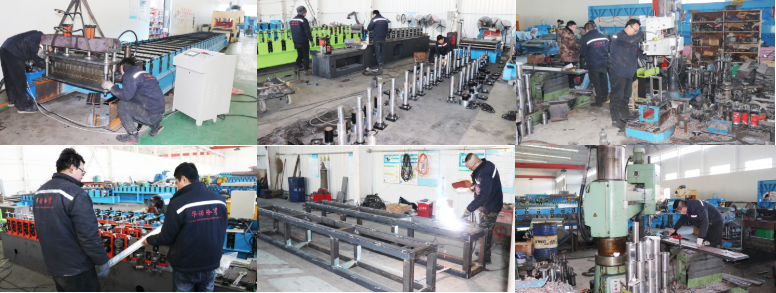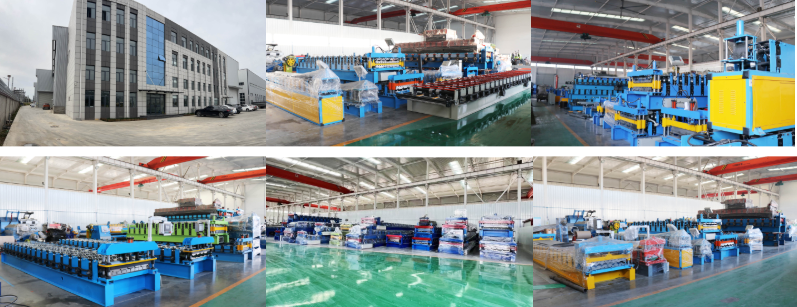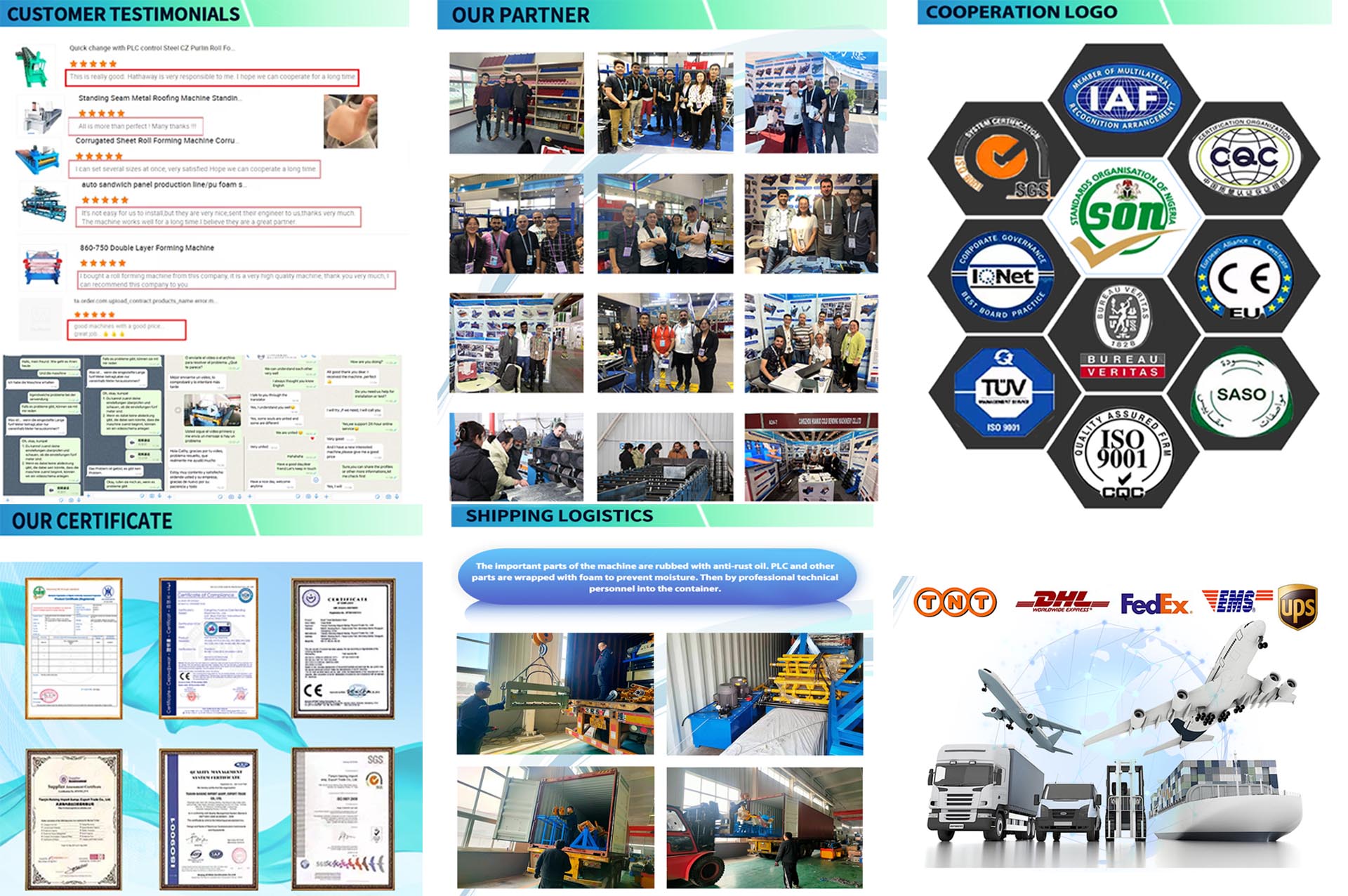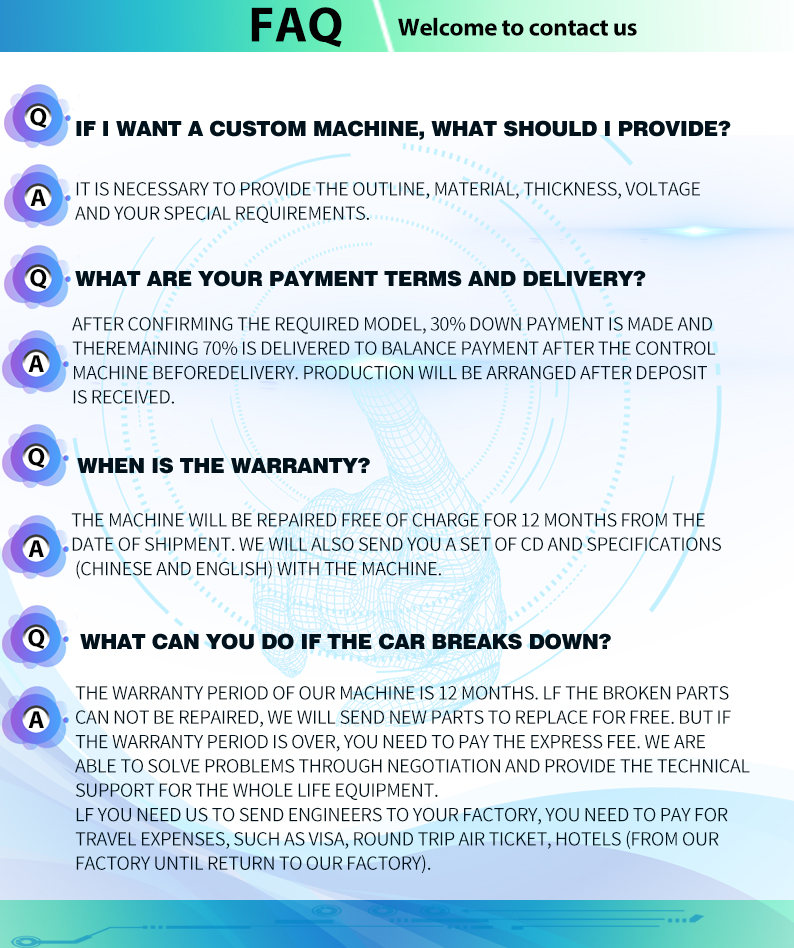Downspout forming machine is a specialized piece of equipment within the metalworking and construction industries. Its primary function is to fabricate downspouts, which are an essential component of any building's rainwater management system. These machines play a crucial role in ensuring that rainwater collected by gutters is safely and efficiently directed away from the building's foundation, protecting it from water damage.
Downspout forming machine is a specialized piece of equipment within the metalworking and construction industries. Its primary function is to fabricate downspouts, which are an essential component of any building's rainwater management system. These machines play a crucial role in ensuring that rainwater collected by gutters is safely and efficiently directed away from the building's foundation, protecting it from water damage.
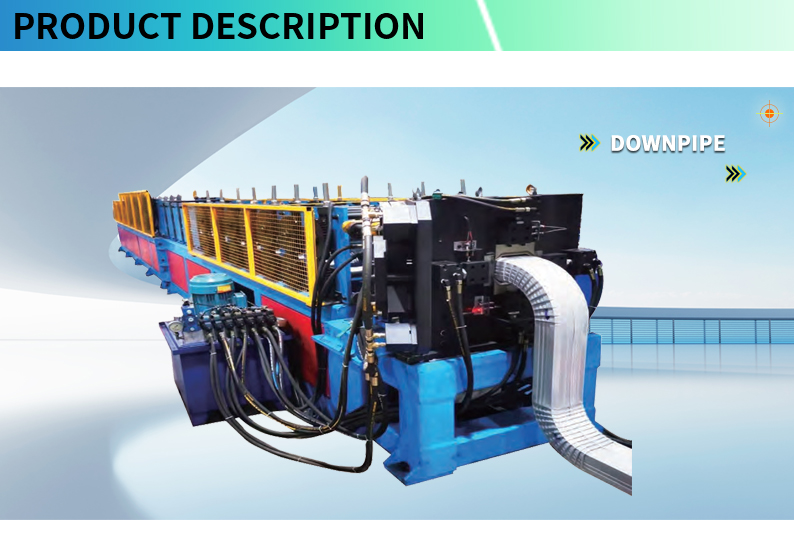
Working Principle
Most downspout forming machines operate on the principle of cold roll - forming. This process involves passing a continuous strip of metal, such as pre - painted galvanized steel, aluminum, or copper coils, through a series of rollers. The rollers gradually shape the flat metal strip into the desired downspout profile. The material is deformed plastically at room temperature, without the need for heating, which helps to maintain the integrity of the metal's properties.
For example, in a typical downspout forming machine, the metal coil is first loaded onto a decoiler. The decoiler unwinds the coil and feeds the metal strip into the roll - forming section. As the strip moves through the roll - forming system, the rollers, which are precisely designed to match the downspout profile, gradually bend and shape the metal. The number of forming passes and the design of the rollers are carefully engineered to ensure a smooth and accurate shape. After the roll - forming process, the downspout reaches the cutting section. Here, a cutting mechanism, which can be either a mechanical shear or a hydraulic cutter, cuts the downspout to the required length. Some machines are equipped with computer - controlled cutting systems that can accurately cut the downspout to specific lengths, ensuring consistency in production.

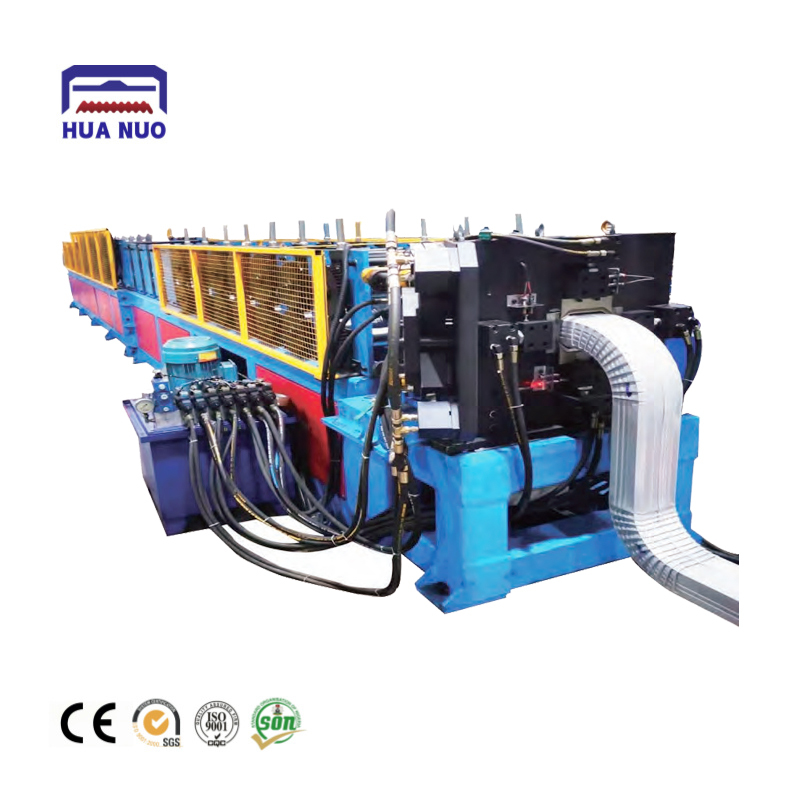
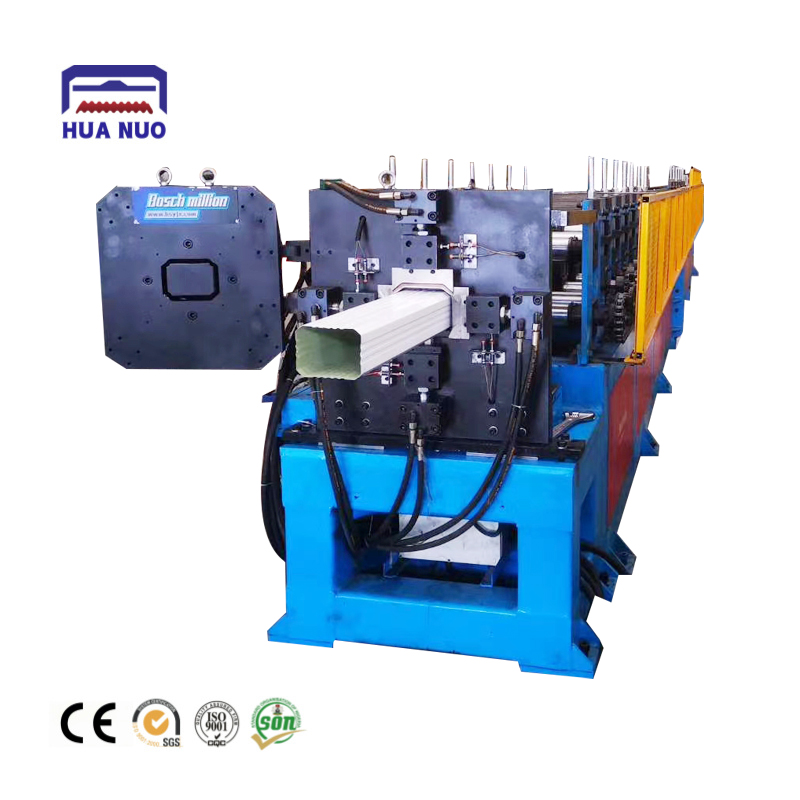
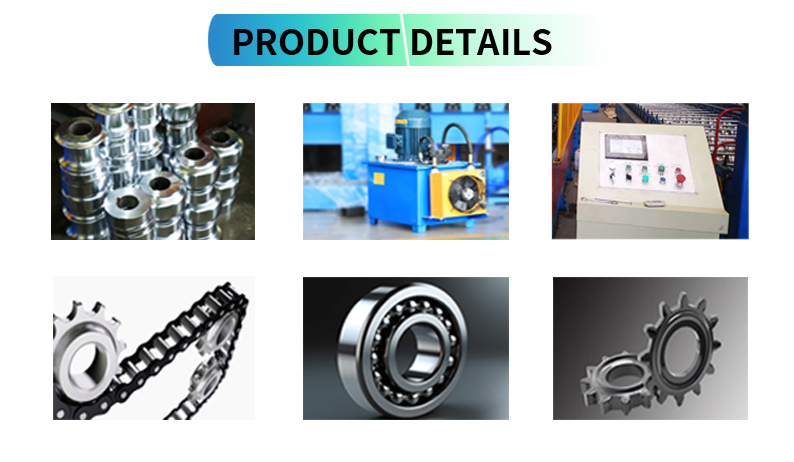
These are the most common type of downspout forming machines. They are designed to produce regular - sized downspouts, typically in standard square or round profiles. Standard downspout machines can handle a range of material thicknesses, usually from 0.4 - 0.6 mm for pre - painted galvanized steel coils. They are suitable for use in both residential and commercial construction projects. For instance, in a residential neighborhood, a contractor might use a standard downspout forming machine to quickly produce and install downspouts for multiple houses. These machines often have a production speed of around 8 - 10 m/min, allowing for efficient production.
Specialty downspout machines are designed to produce downspouts with unique profiles or features. This could include downspouts with decorative elements, such as embossed patterns, or those with specific functional requirements, like extra - thick walls for high - load applications. Some specialty machines are capable of producing downspouts with curved sections, which are useful in complex architectural designs where straight downspouts may not be suitable. For example, in a historic building restoration project, a specialty downspout forming machine might be used to create downspouts that match the original, ornate design of the building.
Combo downspout machines are versatile pieces of equipment that can produce both downspouts and other related components, such as elbows or couplings. These machines are highly efficient for contractors or manufacturers who need to produce a complete rainwater drainage system in one production run. For instance, a combo downspout machine can produce a straight downspout section and then, with a change in the tooling, create an elbow that fits perfectly onto the end of the downspout. This eliminates the need for separate machines to produce different parts of the drainage system, saving both time and space in the production facility.
The decoiler is the starting point of the downspout production process. It holds the metal coil and unwinds it at a controlled rate. Modern decoilers are equipped with features such as adjustable tension control, which ensures that the metal strip is fed into the roll - forming section smoothly without any slack or excessive tension. Some decoilers also have automatic coil loading systems, which make it easier and safer to change coils during production. For example, a large - scale manufacturing facility that produces downspouts in high volumes would benefit from an automatic coil - loading decoiler, as it reduces the downtime associated with manual coil changes.
The roll - forming system is the heart of the downspout forming machine. It consists of a series of rollers that are arranged in a specific sequence to shape the metal strip. The rollers are typically made of high - quality materials, such as hardened steel or alloy steel, to withstand the forces exerted during the roll - forming process. They are often precision - ground and chrome - plated to ensure a smooth surface finish on the downspout. The design of the roll - forming system is crucial, as it determines the accuracy and quality of the downspout profile. For example, if the rollers are not properly aligned or if they have worn out, the resulting downspouts may have inconsistent shapes or dimensions.
The cutting mechanism is responsible for cutting the formed downspout to the desired length. There are two main types of cutting mechanisms used in downspout forming machines: mechanical shears and hydraulic cutters. Mechanical shears use a set of blades that are driven by a mechanical linkage to cut through the metal. They are simple and reliable but may require more maintenance over time. Hydraulic cutters, on the other hand, use hydraulic pressure to power the cutting blades. They are capable of making cleaner and more precise cuts, especially when working with thicker materials. Some advanced cutting mechanisms are computer - controlled, allowing for accurate length cuts and the ability to program different cutting lengths for batch production.
The control system of a downspout forming machine is what allows the operator to control the various functions of the machine. It can range from a simple manual control panel to a sophisticated computer - numerical - control (CNC) system. A basic control panel may have switches and dials to control the speed of the machine, the cutting length, and the operation of the decoiler. In contrast, a CNC system allows for more precise control and automation. With a CNC system, the operator can input specific parameters, such as the downspout profile, length, and production quantity, and the machine will automatically adjust the roll - forming and cutting processes accordingly. This not only increases the accuracy of the production but also improves the overall efficiency of the machine.
In residential construction, downspout forming machines are used to create downspouts for houses, townhouses, and other single - family or multi - family dwellings. Properly installed downspouts are essential for protecting the home's foundation from water damage caused by rainwater runoff. A downspout forming machine allows contractors to produce downspouts on - site, which can be customized to fit the specific needs of each home. For example, in a new housing development, a contractor can use a downspout forming machine to quickly produce and install downspouts that match the architectural style of the houses and ensure effective water drainage.
Commercial buildings, such as office buildings, shopping malls, and industrial facilities, also require a reliable rainwater management system. Downspout forming machines are used to produce large - scale downspouts that can handle the significant amount of rainwater runoff from these extensive rooftops. These downspouts often need to be more robust and durable than those used in residential applications. For instance, in a large shopping mall, the downspouts need to be able to handle the high volume of rainwater during heavy storms. A downspout forming machine can produce downspouts with thicker walls and larger diameters to meet these requirements.
During renovation and restoration projects, downspout forming machines can be used to replace old or damaged downspouts. In historic building restoration, it may be necessary to replicate the original downspout design. A downspout forming machine can be adjusted to produce downspouts with the same profiles and features as the original ones. This helps to maintain the historical integrity of the building while also ensuring proper water drainage. For example, in the restoration of a Victorian - era mansion, a specialty downspout forming machine can be used to create downspouts with the same decorative elements as the original ones, which were likely made of copper or cast iron.
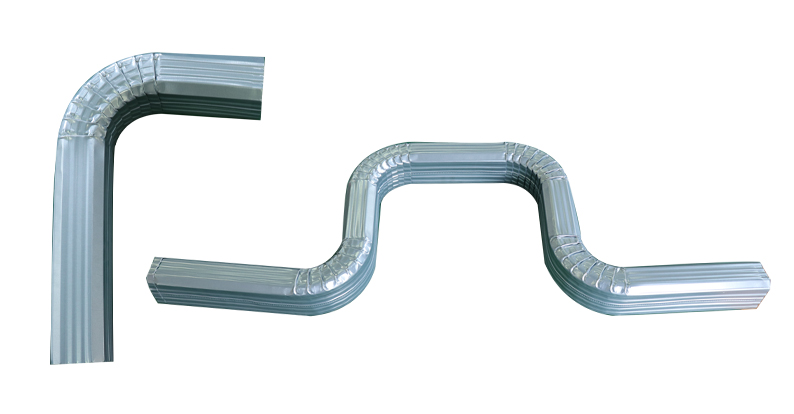
Producing downspouts in - house with a downspout forming machine can be more cost - effective than purchasing pre - fabricated downspouts. By eliminating the need to buy pre - made downspouts and transport them to the job site, contractors can save on both material and transportation costs. Additionally, the ability to produce downspouts on - demand means that there is less waste, as only the required amount of material is used. For example, a small - to - medium - sized construction company that regularly installs downspouts can recoup the cost of purchasing a downspout forming machine within a relatively short period by reducing its reliance on pre - fabricated products.
Downspout forming machines offer a high degree of customization. Contractors can produce downspouts in different sizes, profiles, and materials to meet the specific needs of each project. This is especially important in architectural designs where standard pre - fabricated downspouts may not fit. For instance, in a building with an irregular roofline or unique aesthetic requirements, a downspout forming machine can be used to create downspouts that are tailored to the building's design. Different materials, such as aluminum for a lightweight and corrosion - resistant option or copper for a more aesthetically pleasing and durable choice, can be used with the same machine.
When downspouts are produced using a downspout forming machine, there is better control over the quality of the product. The roll - forming and cutting processes are precise, resulting in downspouts with consistent dimensions and smooth finishes. This reduces the likelihood of leaks or other issues that can occur with poorly - made downspouts. For example, in a seamless downspout production using a machine, there are no joints or seams (unlike traditional pre - cut and assembled downspouts), which are common sources of leaks. The use of high - quality materials in the downspout - making process, along with the precision of the machine, ensures that the downspouts will have a long lifespan and perform effectively in diverting rainwater away from the building.
The purchase of a downspout forming machine represents a significant initial investment. The cost of the machine can range from a few thousand dollars for a basic, manual - operated model to tens of thousands of dollars for a high - end, automated machine. Small contractors or those with limited budgets may find it difficult to afford such an investment. However, as mentioned earlier, the long - term cost savings can make it a worthwhile investment for businesses that regularly install downspouts.
Downspout forming machines require regular maintenance to ensure optimal performance. This includes lubricating the moving parts, inspecting and replacing worn - out rollers and cutting blades, and maintaining the control system. Additionally, operators need to be trained on how to use the machine properly. Improper use can lead to damaged products, reduced machine lifespan, and potential safety hazards. For example, if an operator does not set the cutting length correctly on the control panel, the downspouts produced may be of the wrong length. Training programs are available from machine manufacturers and third - party providers to ensure that operators are proficient in using the equipment.
Not all downspout forming machines are compatible with all types of materials. Some machines are designed specifically for certain materials, such as steel or aluminum. Using the wrong material in a machine can lead to poor - quality products or damage to the machine. For example, if a machine that is designed for aluminum is used to process steel, the rollers may not be able to effectively shape the thicker and harder steel material, and the cutting mechanism may struggle to cut through it. It is important for manufacturers and contractors to ensure that the machine they choose is compatible with the materials they plan to use.
The future of downspout forming machines is likely to see an increase in automation and the integration of smart technology. More advanced CNC systems will be developed, allowing for even greater precision and control. These systems may be able to self - diagnose problems, adjust production parameters in real - time, and communicate with other machines in a manufacturing facility. For example, a smart downspout forming machine could detect if a roller is starting to wear out and automatically adjust the production speed or alert the operator to replace the roller before it causes any issues with the downspout quality.
As the construction industry becomes more environmentally conscious, there will be a growing demand for downspout forming machines that can work with sustainable materials. This could include recycled metals or new, eco - friendly materials that are designed to be more energy - efficient and have a lower environmental impact. Additionally, manufacturers may focus on developing machines that use less energy during the production process, further reducing their carbon footprint. For example, a downspout forming machine that is designed to work with recycled aluminum coils and is powered by a more energy - efficient motor would be in line with these sustainable trends.
Building Information Modeling (BIM) is becoming increasingly important in the construction industry. Downspout forming machines may be integrated with BIM software in the future, allowing for better coordination between the design, production, and installation of downspouts. This would enable contractors to accurately plan and produce downspouts based on the detailed 3D models created in BIM. For example, the BIM model of a building could be used to generate the exact specifications for the downspouts, which could then be directly input into the downspout forming machine, reducing errors and improving the overall efficiency of the project.
